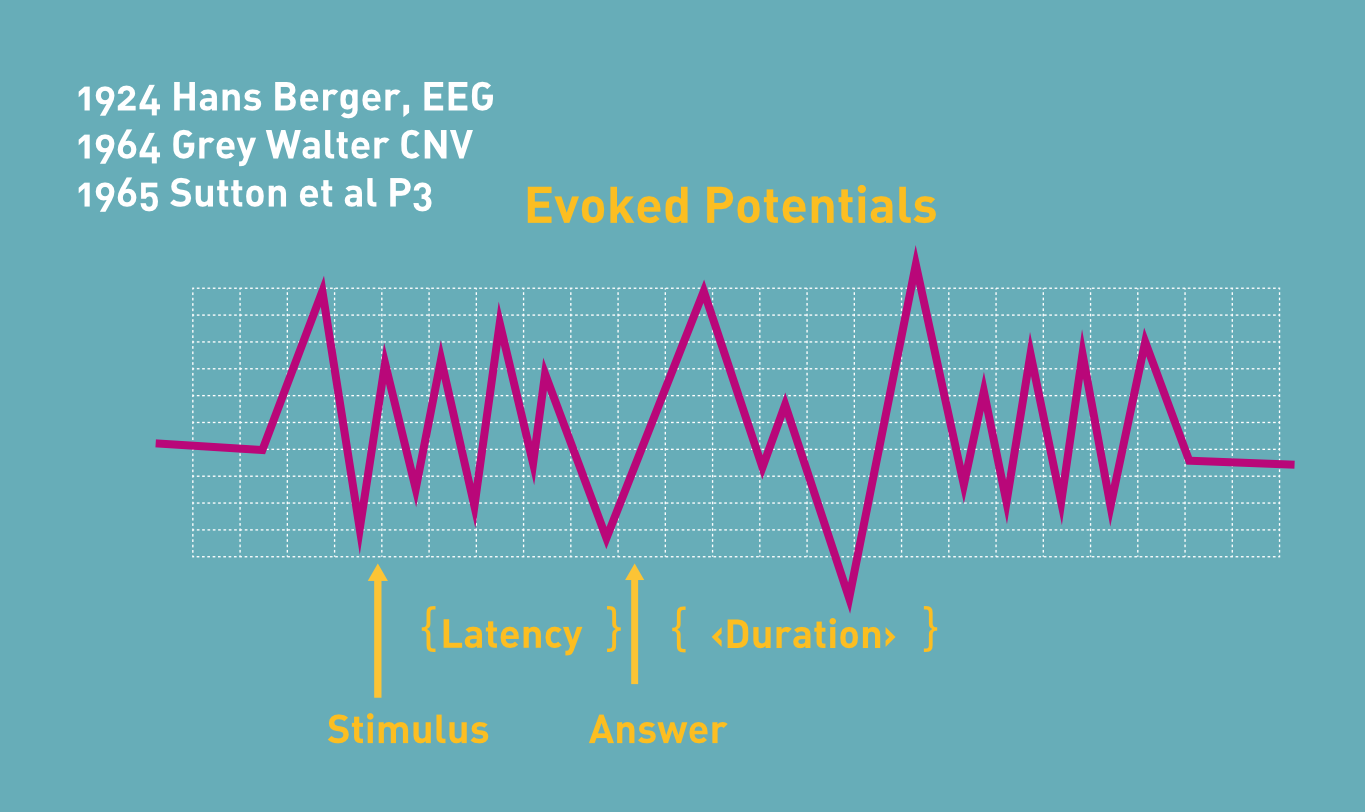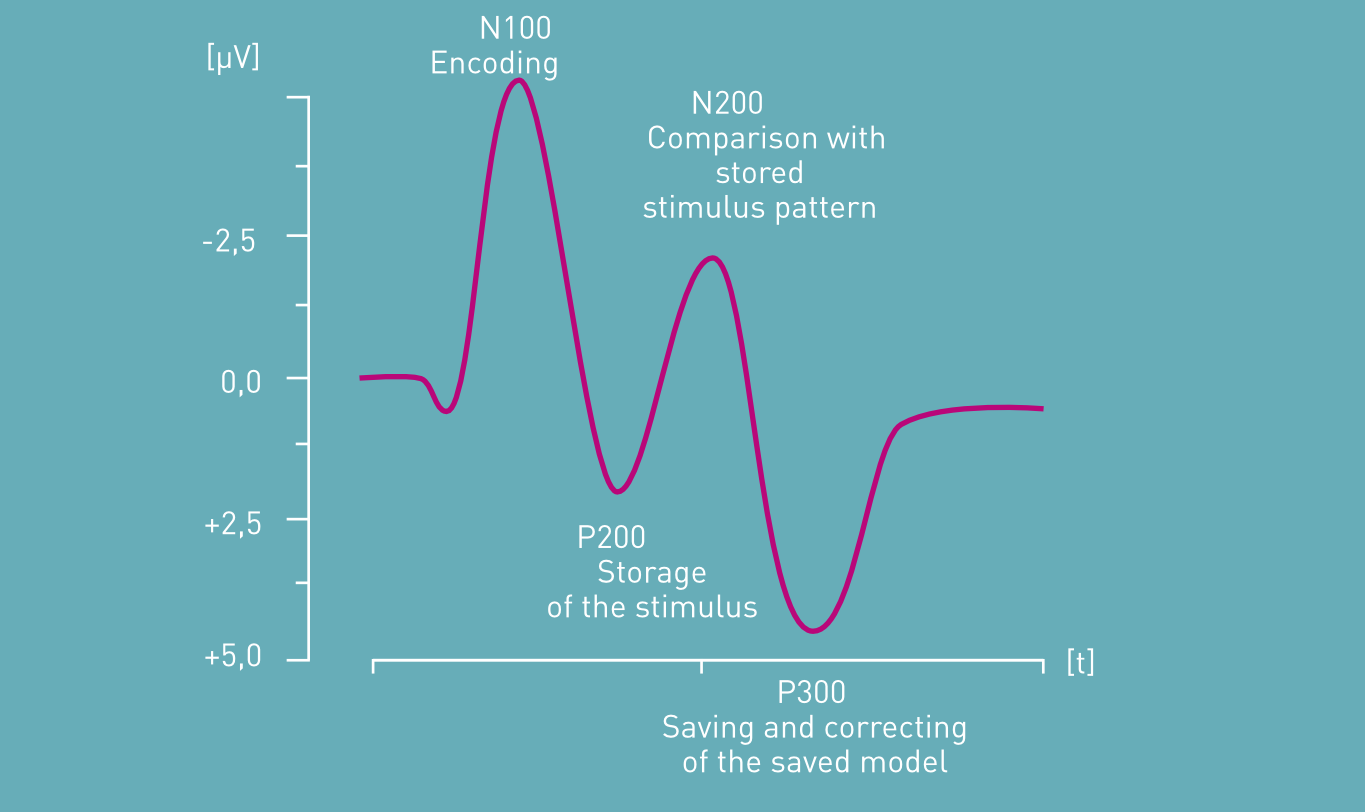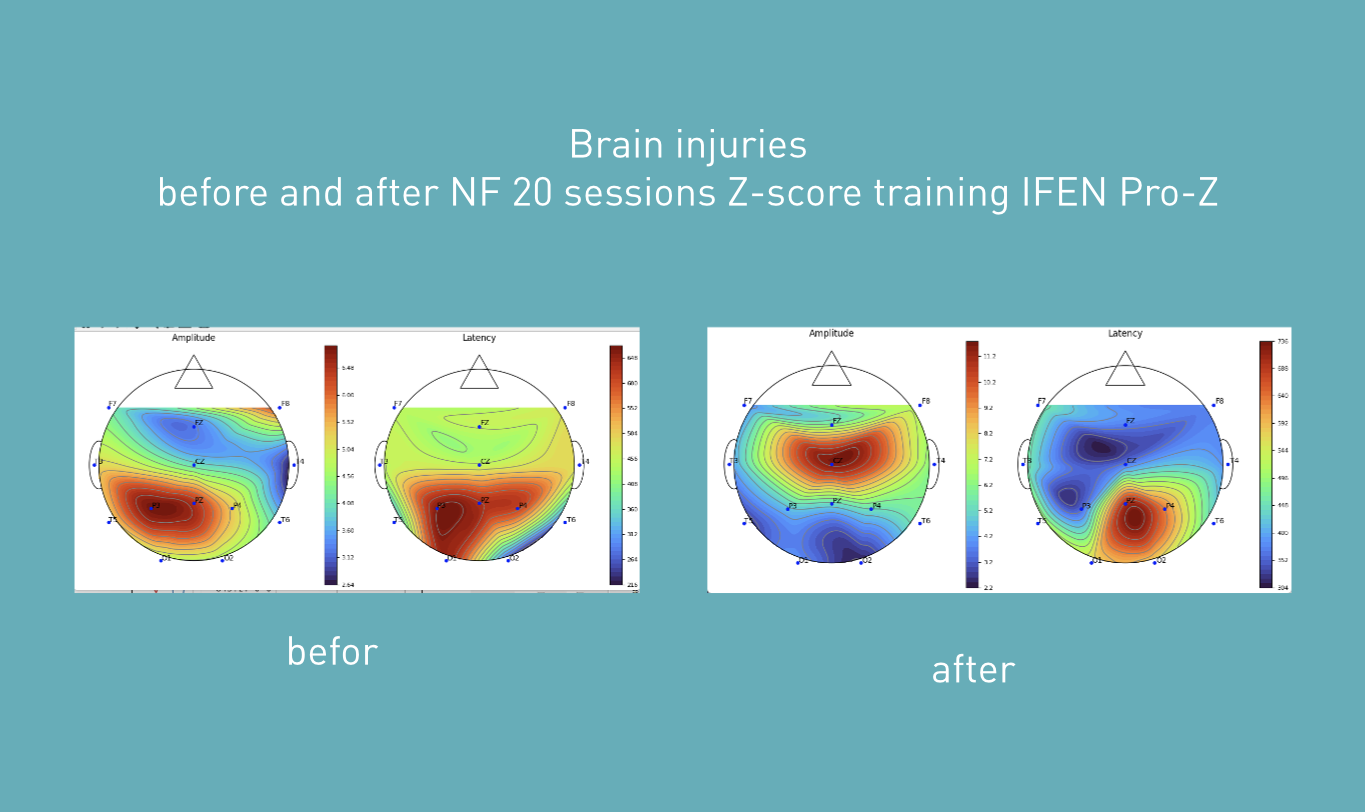ERP
"Experience thinking live"
Event-Related Potentials (ERP)
ERP (Event-Related Potentials) are one of the most fascinating features of the EEG. The EEG is a rich source of information about what is happening in our brains. This is despite the fact that imaging techniques have become better and better in recent years and have achieved a very high resolution.

What are ERPs?
Event-related potentials are recordings of the electrical activity of the brain that are triggered by an event. Each event causes a minimal change in voltage within a certain time window. A rough distinction is made between time windows for sensory and cognitive processing. The early potentials start at around 20 milliseconds, while late potentials can last up to 2 seconds or longer. The early potentials are important for neurological diagnostics, while the range from 200 milliseconds onwards is relevant for the assessment of cognitive functions.

What are ERP measurements?
ERPs are measurements that rely on one or more stimuli to detect changes in the brain. These stimuli can be different, such as sounds, images or tactile stimuli. Images such as letters, numbers or faces are often presented in quick succession. Every stimulus that triggers a perception is processed in the brain and is reflected in the EEG. However, these changes are usually so small that they are not visible to the naked eye. The proportions are comparable to an apple compared to Cologne Cathedral.

Why ERPs?
The use of ERPs is diverse. In addition to the well-known P300, there are numerous variants that are suitable for different clinical examinations. Most tests require attention, short-term memory, discrimination or a combination of these, while attention is undesirable in tests such as the ‘Mismatch Negativity’. ERPs serve as neuromarkers for ADHD, dementia, ageing, anxiety, cognitive performance, depression, autism and specific cognitive and emotional processing characteristics.
The IFEN EKP Project
the history of ERP
The history of event-related potentials (ERPs) began in the 1960s when researchers first investigated electrical brain activity associated with specific sensory, motor or cognitive events. Technological advances in electroencephalography (EEG) made it possible to identify ERP components such as P300 and N400, which provided important insights into perception, attention and memory. Since then, ERPs have been used extensively in neuroscience, psychology and clinical diagnostics to analyse neuronal processes in real time.
The IFEN ERP Project
the Mission
The mission of ERPs is to provide insights into neuronal processing that go far beyond the capabilities of imaging techniques through their unique temporal resolution of just a few milliseconds. Thanks to modern technologies and the tools developed by IFEN, it is now easier and more cost-effective to utilise this valuable data for research and practice to better understand the efficiency and functioning of the brain.
the Vision
The vision ERPs is to make its unique capabilities for analysing neuronal processes accessible to a broad audience in research and practice through advanced and user-friendly tools. The aim is to revolutionise the application of this method in order to make findings about brain function more efficient, cost-effective and usable with minimal effort.
the Inspiration
The inspiration behind ERPs lies in their ability to provide precise insights into the dynamics of the brain that no other method can deliver at this temporal resolution. The combination of easy accessibility, low-cost equipment and state-of-the-art tools opens up new possibilities to better understand and practically apply neural processes.
the project developers and research partners

He is a member of Dr Joe Dispenza's scientific team, which examines QEEG data from meditators. He is also passionate about researching human consciousness. This is why he developed a tool called CAPITO (Cognitive and Psychophysiological Test Operations), which can be used to measure information processing in the brain.

Dr Garner is committed to combining conventional and alternative medicine, which is based on his enthusiasm for Indian healing traditions such as yoga and Ayurveda. From the 1990s onwards, Garner therefore initiated cooperation projects at the KWA Klinik Stift Rottal, such as the Vivekananda University (Bangalore) and the Ayushakti Centre (Mumbay). He also introduced a programme at the KWA Clinic that is specifically dedicated to children with spastic paralysis, stroke patients and patients with traumatic brain injuries. Dr Garner and the KWA Clinic have been in close contact with the Institute for EEG Neurofeedback for many years. Garner is a recognised EEG expert and is strongly committed to the use of the latest methods of applied neuroscience.

He is involved in both clinical and research activities. In the latter area, he is developing studies on the application of live zscore training for neurofeedback and methods for selecting feedback for neurofeedback.

Director of Nepsa in Latin America
IFEN representative for research and training
Certified neurofeedback therapist of the Institute for EEG Neurofeedback
Representative of IFEN in Latin America

The IFEN Tools CAPITO and ERP-Analyzer
With the ERP Analyser and the CAPITO analysis software from the IFEN Neuroscience research kitchen, ERP measurements and evaluations are simple, user-friendly and precise.
The IFEN ERP system stands for
- simple ERP recording
- user-friendly and efficient to use
- versatile applications
- precise measurement of brain activity
- portable handling
- low investment costs
 English (United Kingdom)
English (United Kingdom)  Deutsch (Deutschland)
Deutsch (Deutschland) 